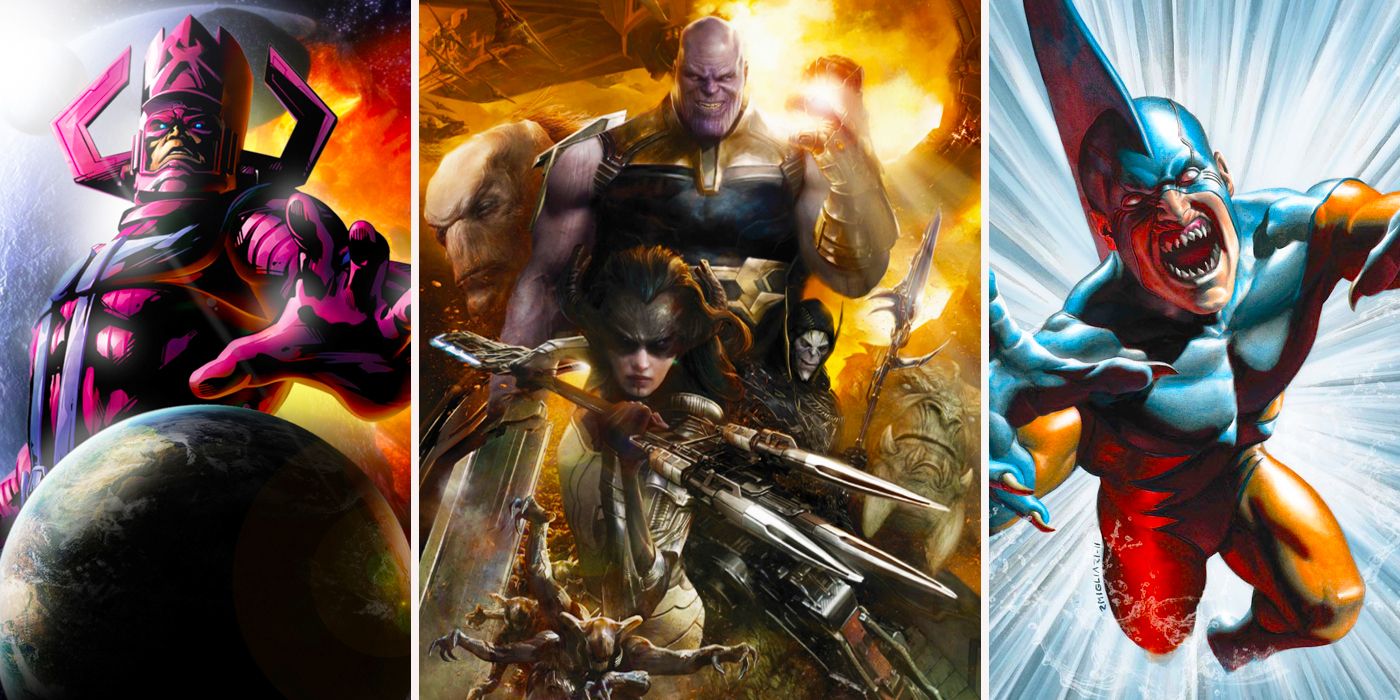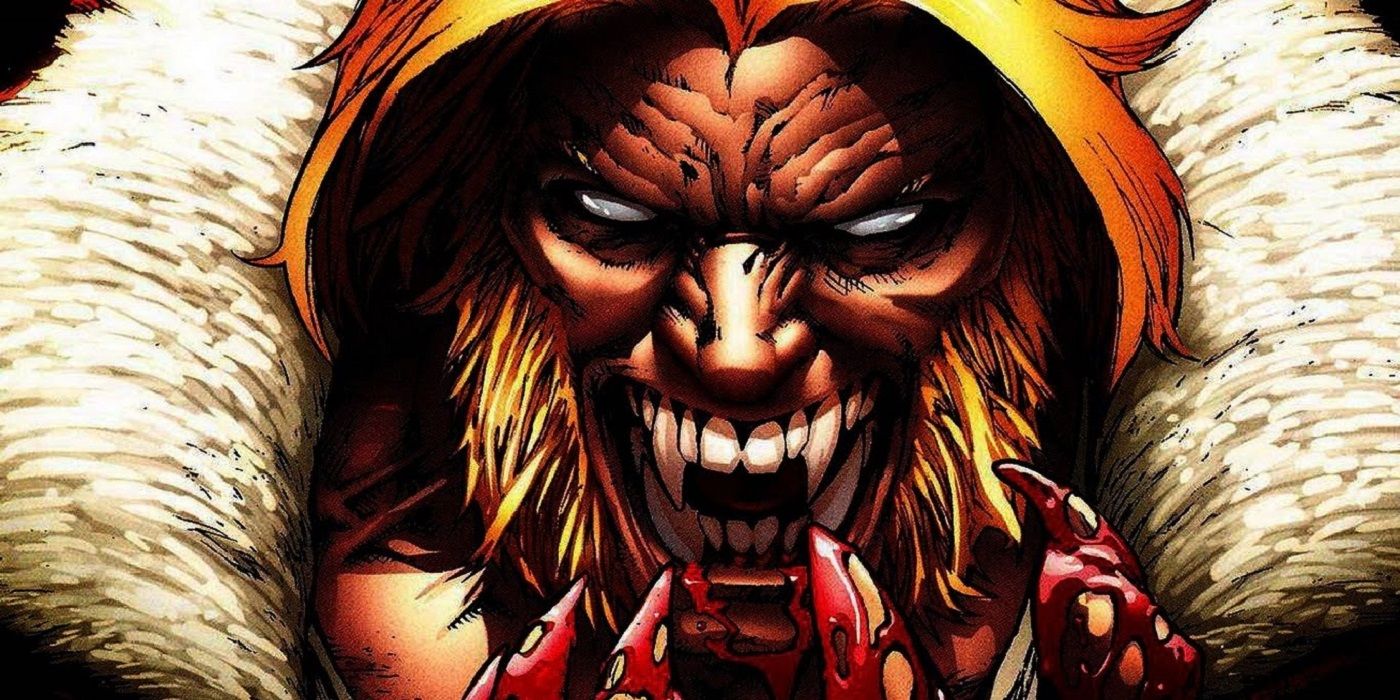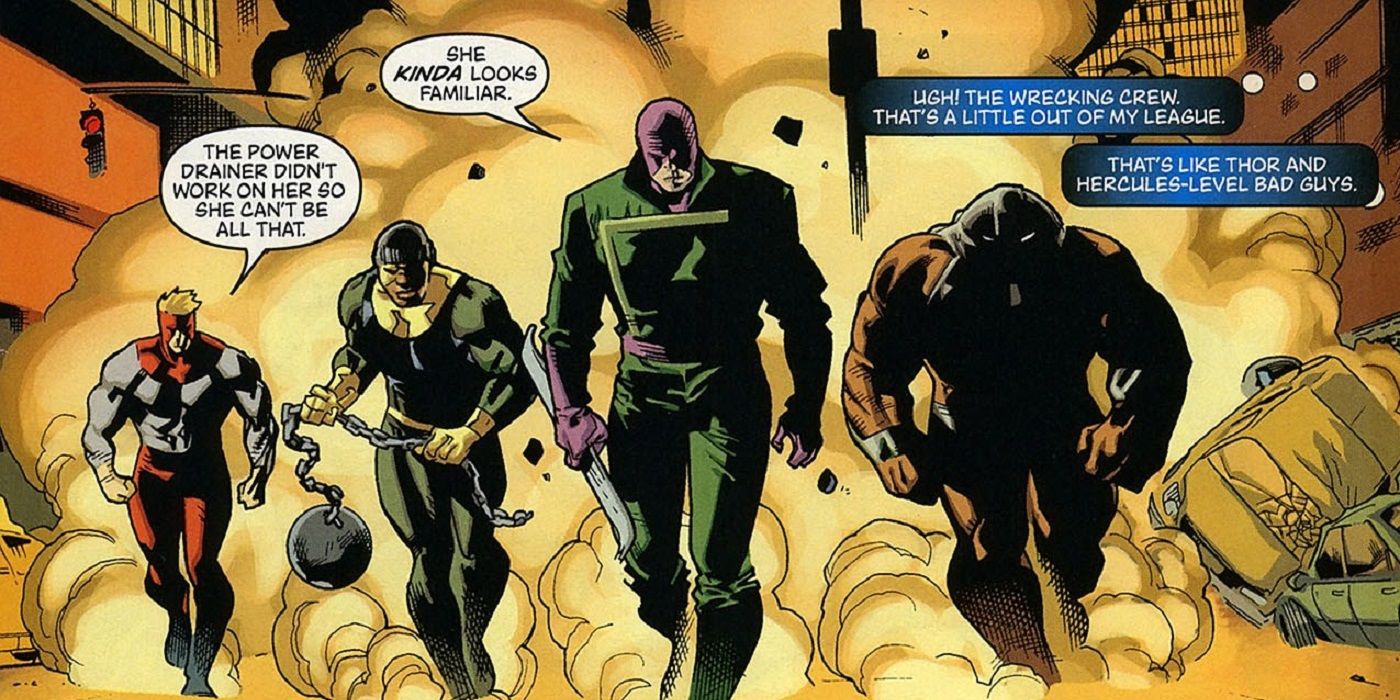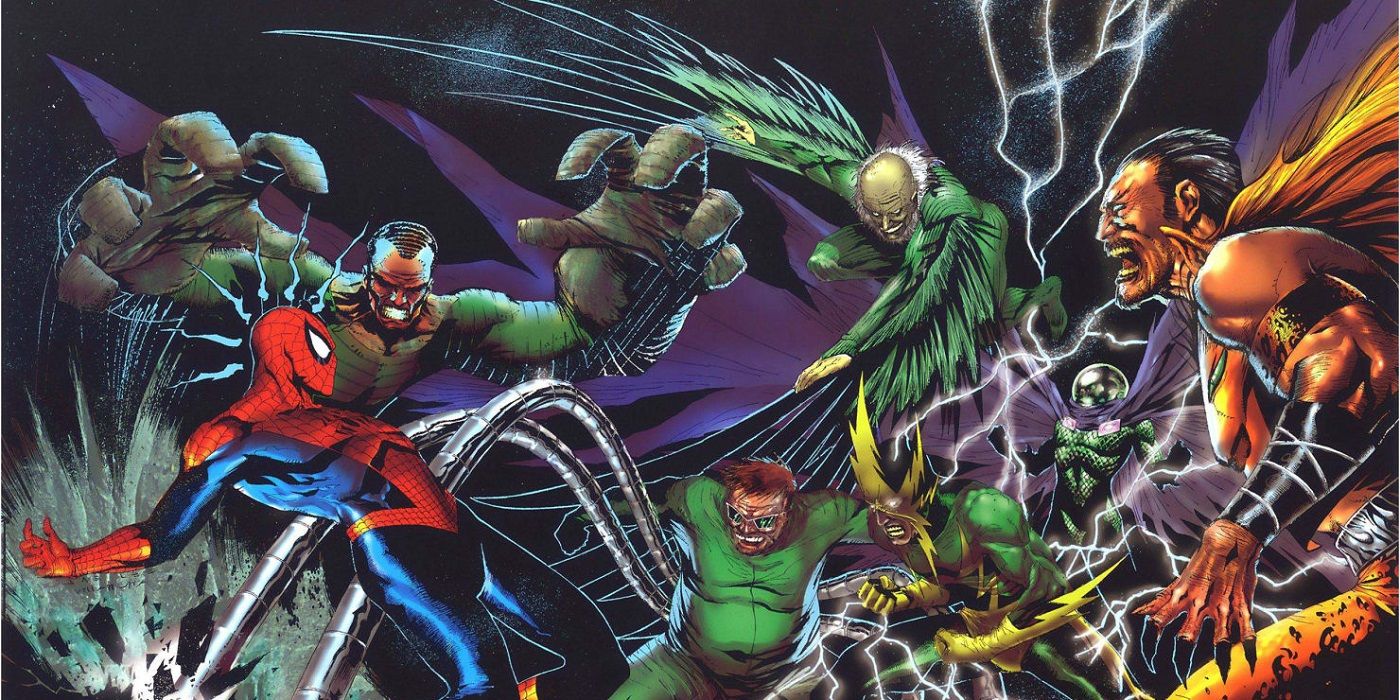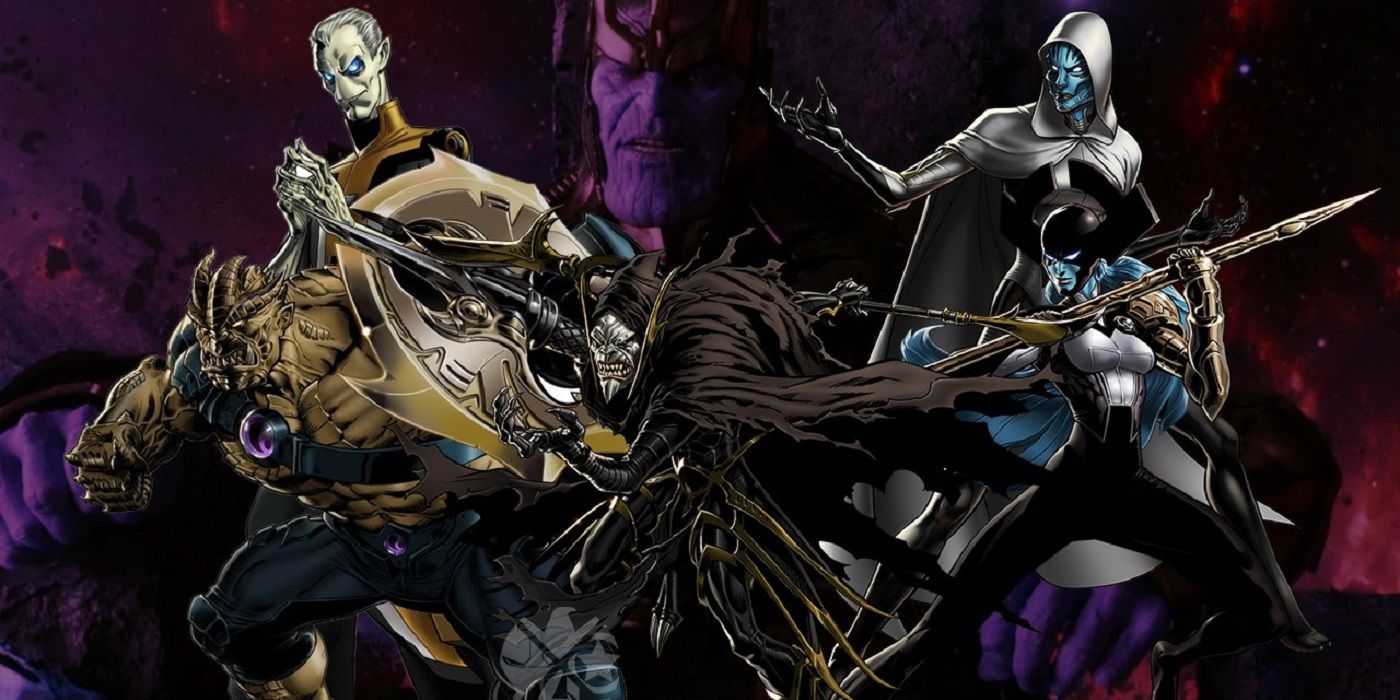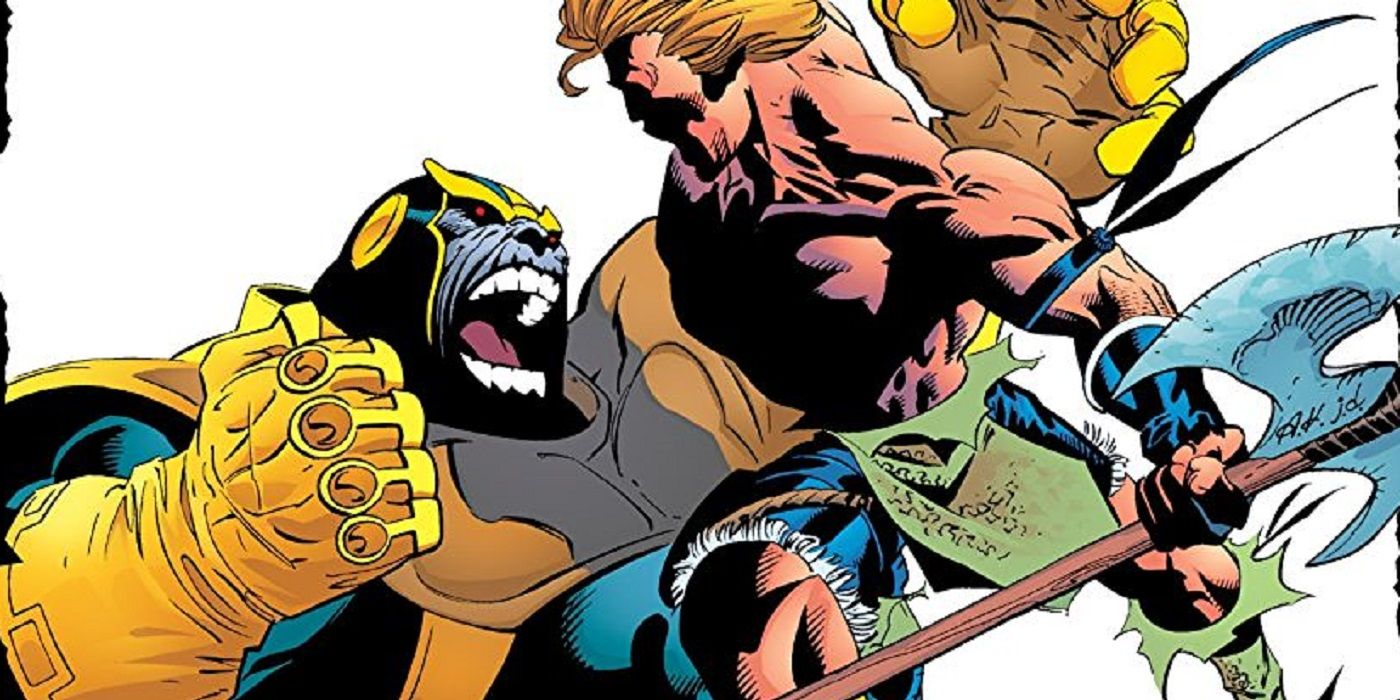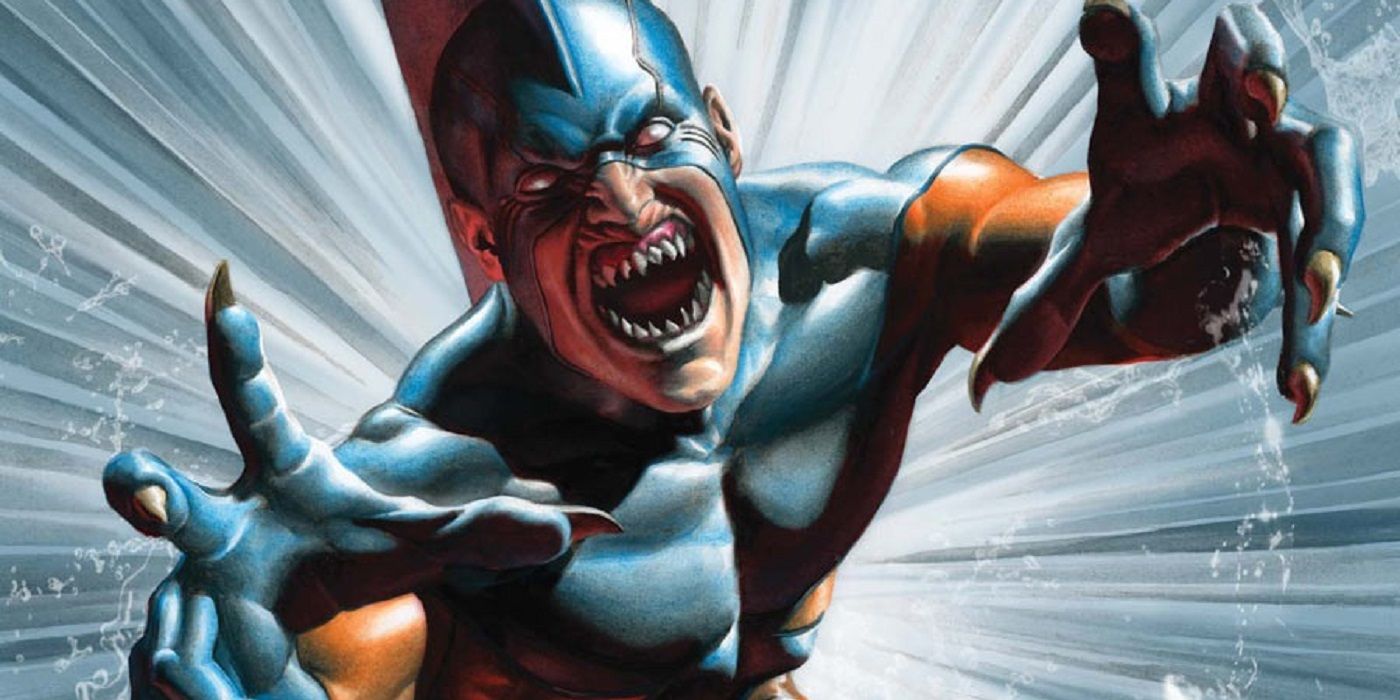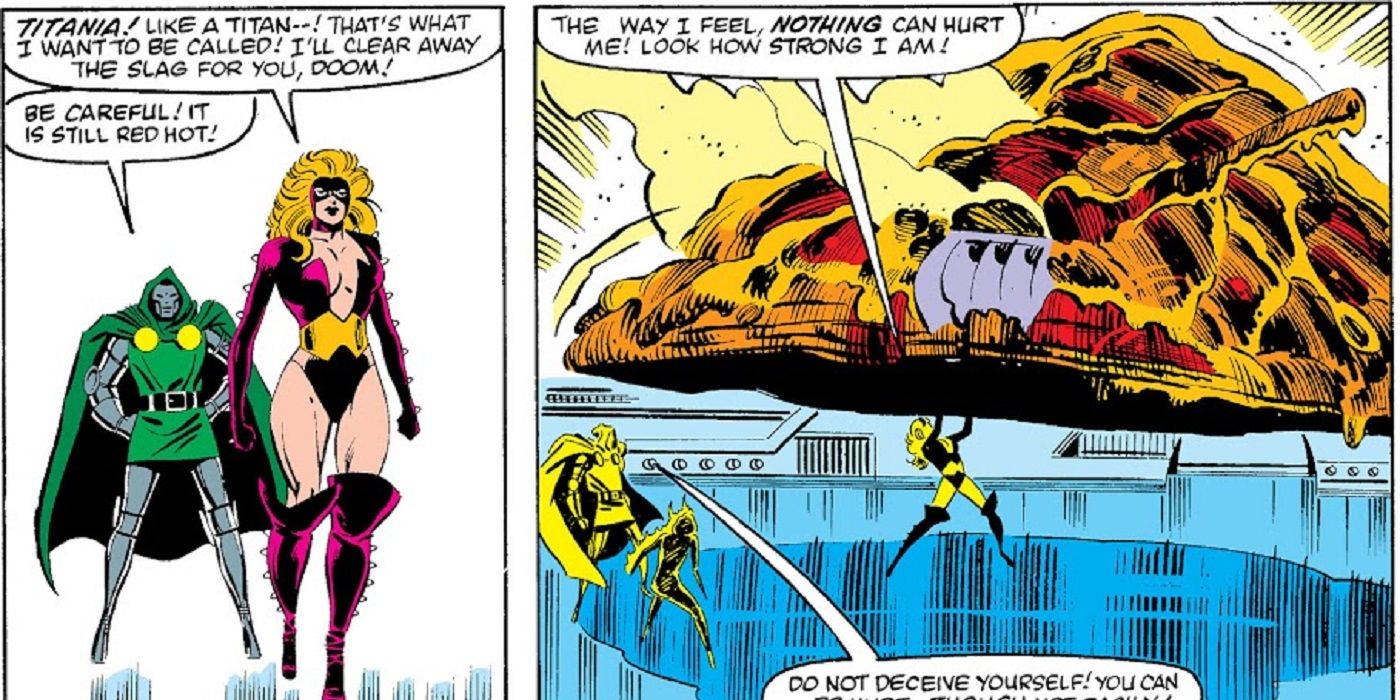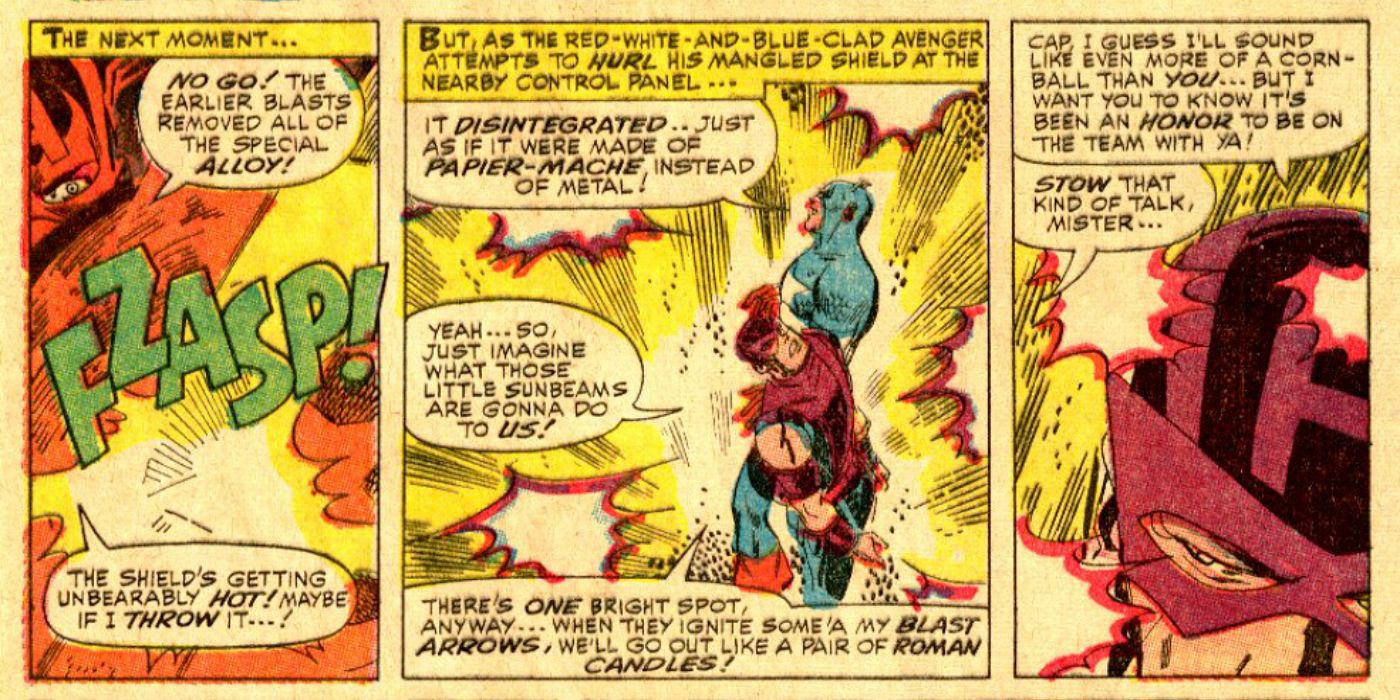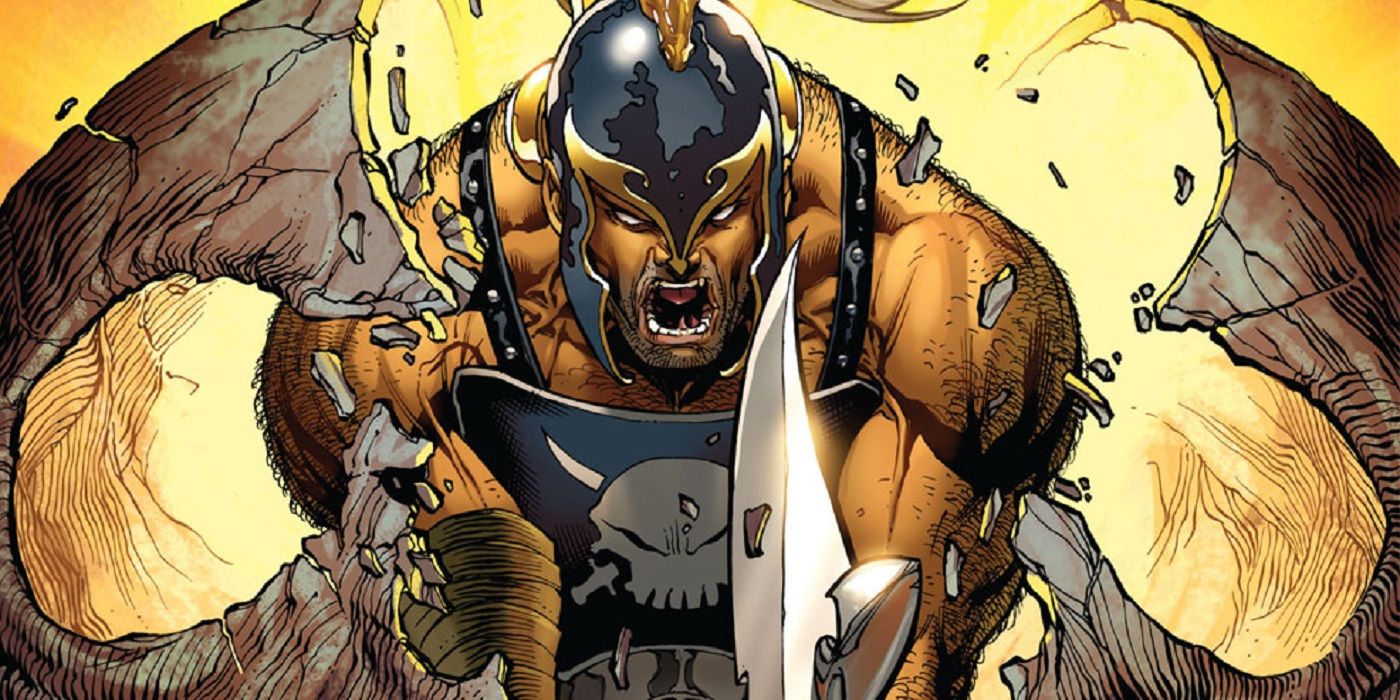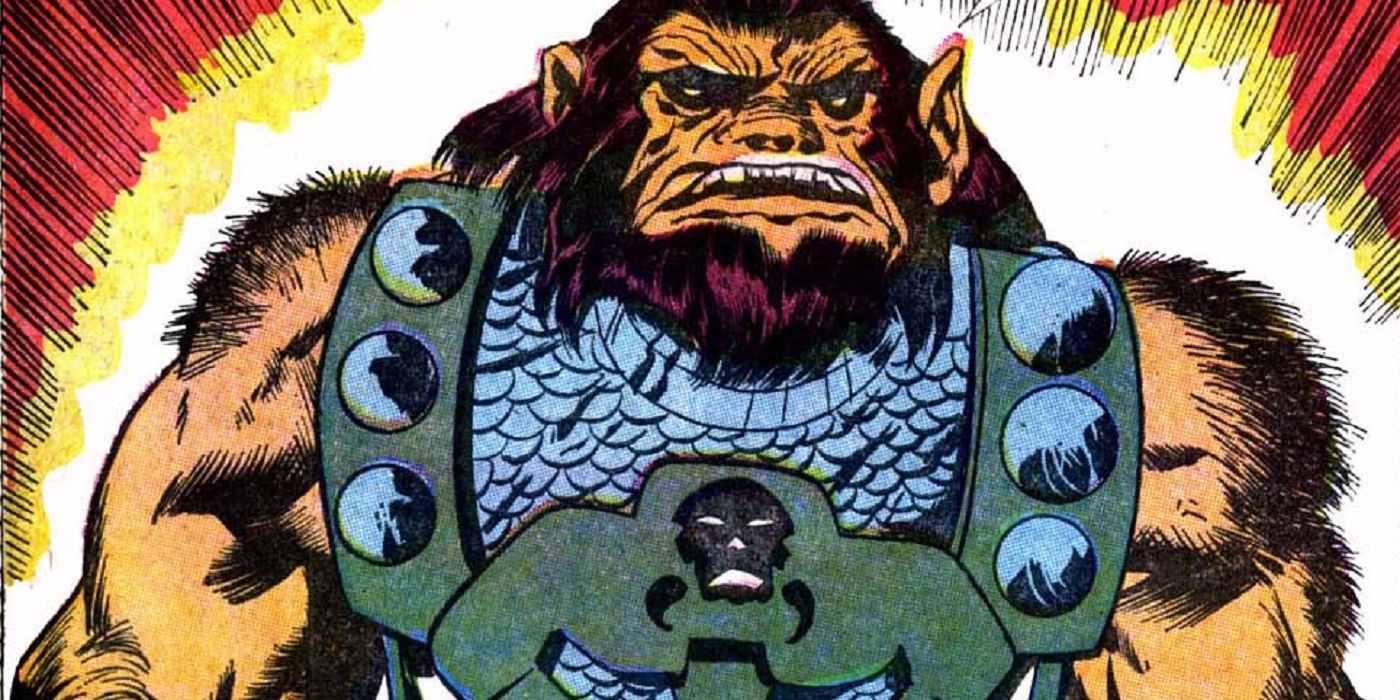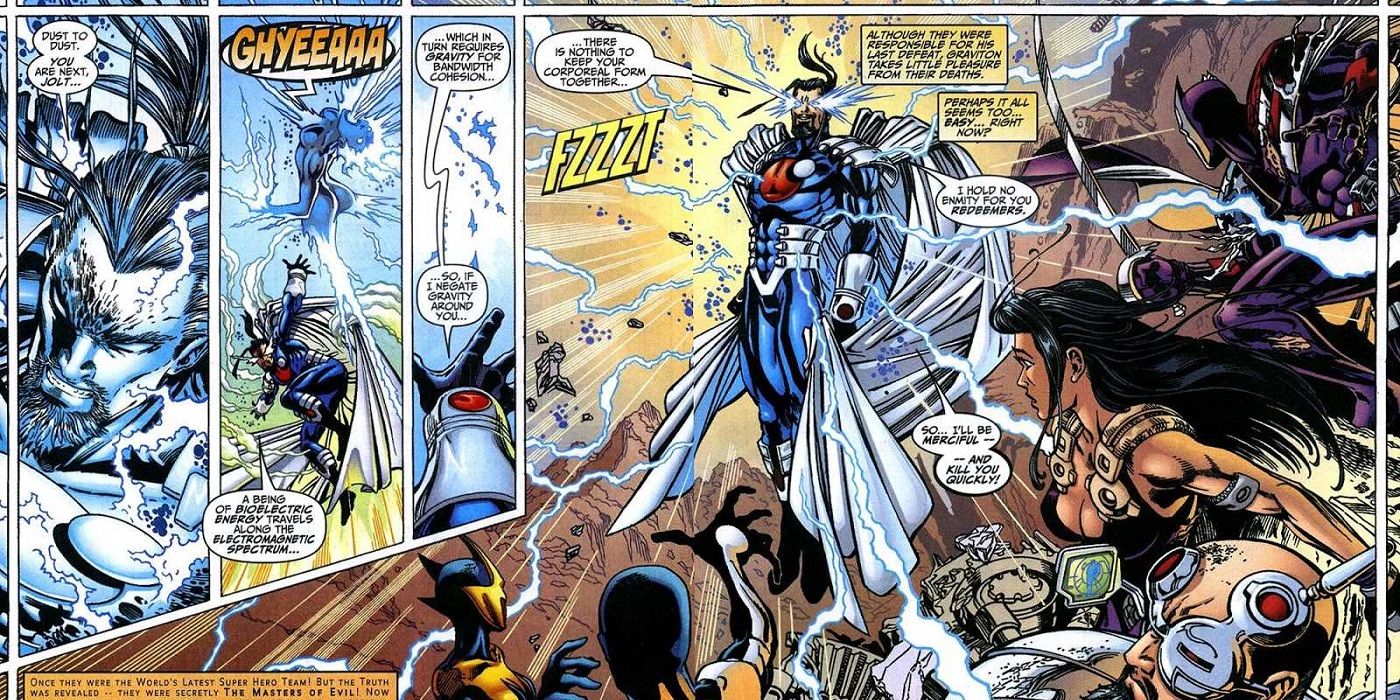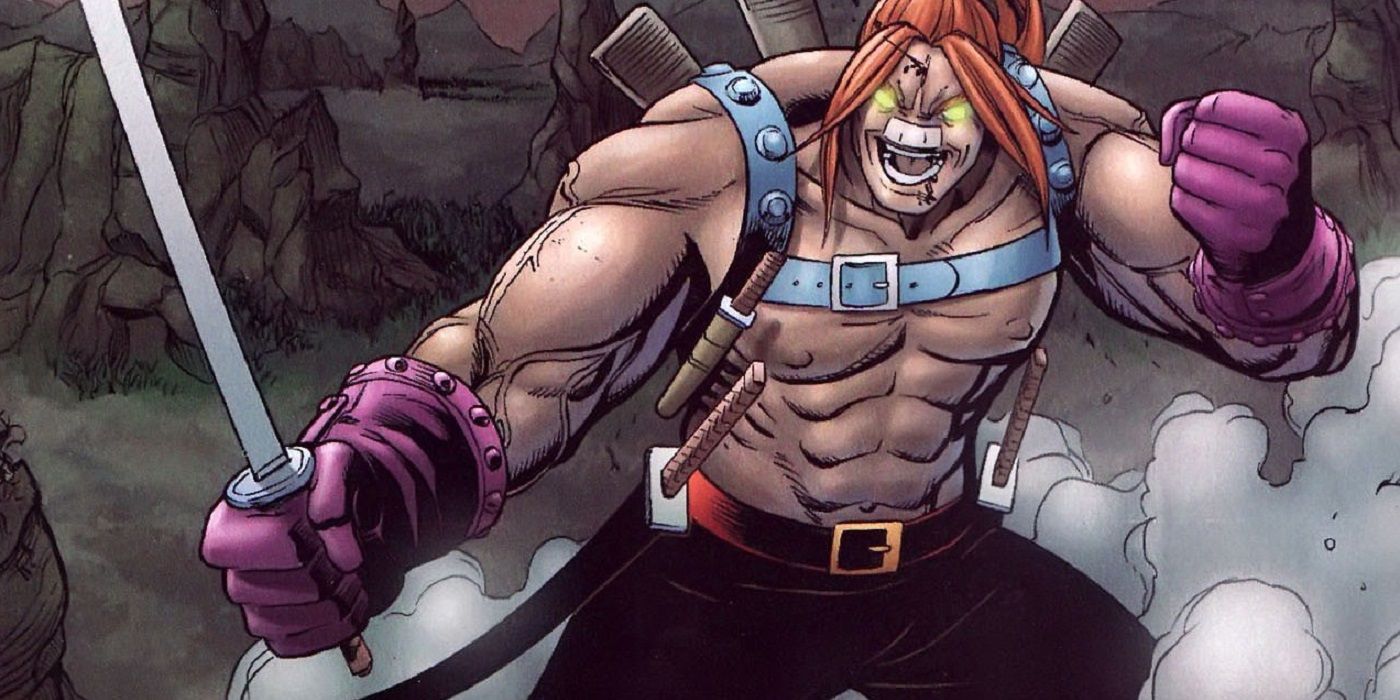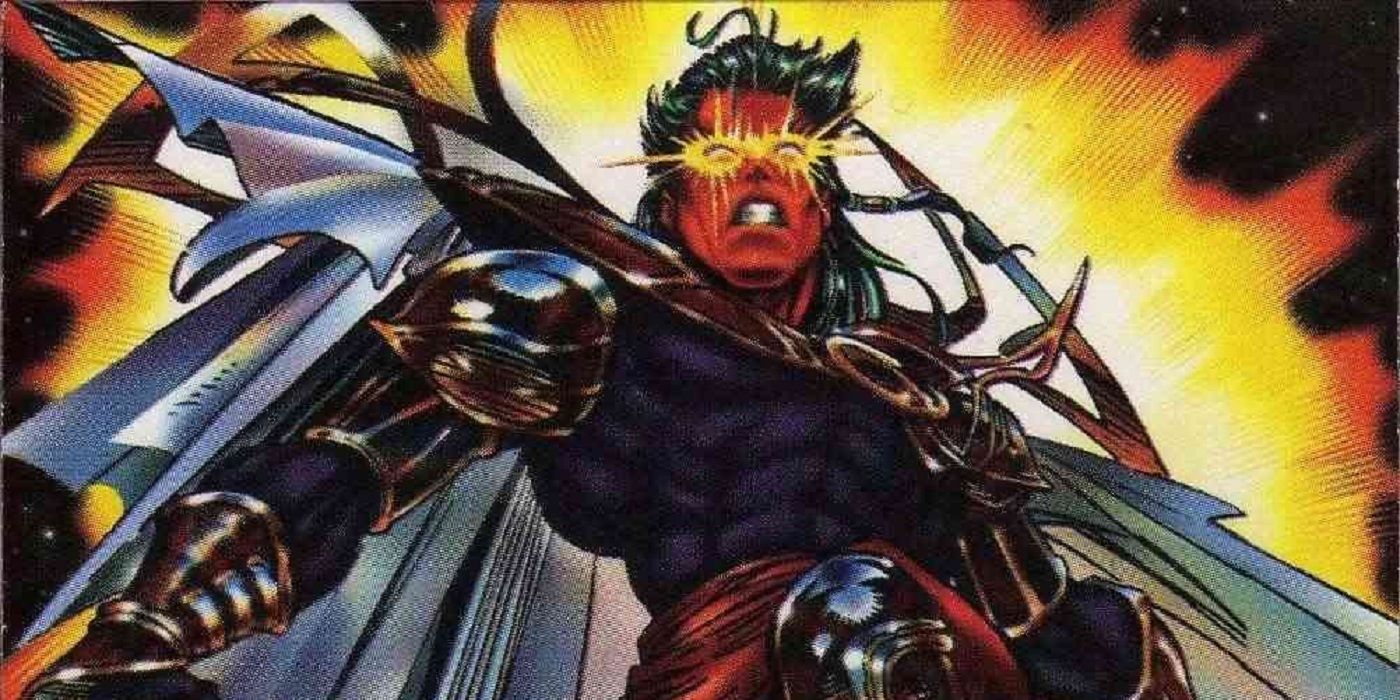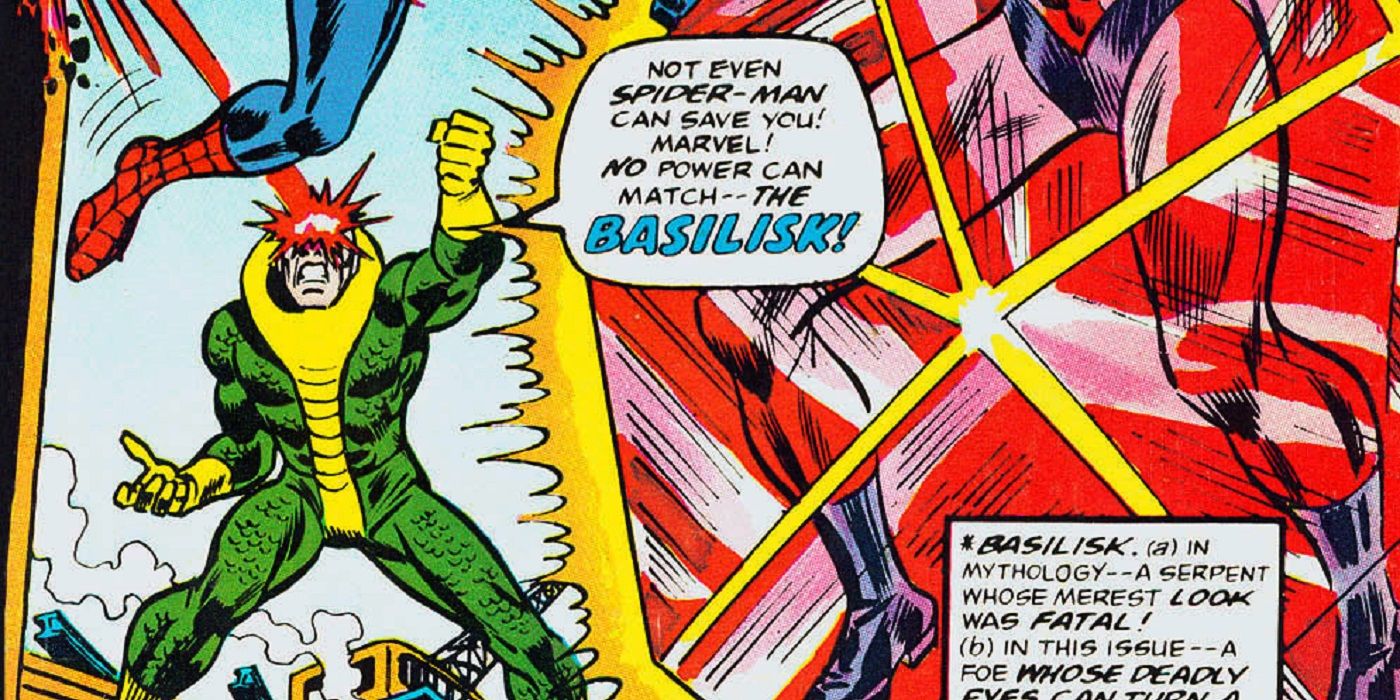A well-known professional wrestling term is "jobber," which is a wrestler whose sole purpose is to lose. They are there to enhance the reputations of the people who defeat them. In other words, they are meant to look tough, but in the end, they will lose to the more popular wrestler so that it will make the wrestler who defeated them look good. These wrestlers are typically journeymen, but occasionally you will have a jobber who defeats lesser wrestlers so that it makes it better when he or she loses to a star wrestler or an up-and-coming wrestler.
The term has transitioned to comic books, where it has come to apply to comic book villains who are technically very strong and certainly look imposing, but they always manage to lose, even to characters who are seemingly much less powerful than them. Superheroes are supposed to win in the end, but sometimes, in the process, the reputation of the villains that they defeat take big hits in the process. The effect, then, is the opposite, tearing down the reputation of the villain and doing not much for the triumphant hero. Here, we celebrate (or commiserate) 20 physically imposing Marvel supervillains, who have proven surprisingly easy to defeat over the years.
20 SABRETOOTH
Sabretooth was created with the intent of being tied together with Wolverine, but for whatever reason, it took more than a decade before Sabretooth even met Wolverine in a comic book! In that decade, Sabretooth became more and more of a sad sack character. He went from barely being defeated by Iron Fist to becoming actually part of a criminal partnership with... Constrictor? It says a lot about a villain if they are partnered with someone like Constrictor. Sabretooth was a recurring villain in Power Man and Iron Fist and his results were worse and worse as time went by.
Even when Power Man and Iron Fist ended, Sabretooth then got beaten easily by Black Cat in the pages of Spectacular Spider-Man. Claremont finally got him into an X-Men storyline, and Sabretooth has fared generally better since. Claremont even planned at one point to reveal that the Sabretooth who kept losing all the time was a clone. The writer's take was that Sabretooth should always be a little bit stronger and a lot bit tougher than Wolverine. In the years since, Sabretooth has gone back to losing to Wolverine all of the time. Wolverine even beheaded him once!
19 THE WRECKING CREW
No super villains are quite as good at "jobbing" as the Wrecking Crew. The Wrecker was introduced in Thor's comic book when Loki gave him an enchanted crowbar that gave him strength enough to take on Thor all by himself. Over time, though, the Wrecker decided that he liked being part of a crew, so he shared the power with three other criminals -- Thunderball, Piledriver and Bulldozer. They formed the Wrecking Crew.
The Wrecking Crew have an interesting place in the Marvel Universe as they are the characters that seemingly every superhero beats at one point or another to show how strong the new superhero is. Hawkeye once took down Piledriver with a wooden arrow! No matter what the power level is, it seems like the Wrecking Crew always end up losing to some new superhero. Writers sometimes try to redeem the team, like when Kurt Busiek came up with the idea that they could be powered by alternate sources, such that their abilities were all ramped up for a brief period of time. In general, though, their entire existence seems to be based around them getting easily defeated by heroes, despite the fact that they are intended to be able to give Thor a run for his money.
18 THE SINISTER SIX
In the very first Amazing Spider-Man Annual, Steve Ditko and Stan Lee celebrated the fact that they had come up with such an amazing Rogues Gallery for Spider-Man that they put six of the villains onto a single team. In that first issue, Spider-Man defeated each one of them, but the villains' plan was to specifically attack Spider-Man one by one, so it really was just as if Spider-Man was having a normal battle with his normal villains -- just all in a row.
They then disbanded and didn't get back together until 25 years later, when they re-formed their team for a few attacks against Spider-Man. Here, though, things were even more embarrassing, as they attacked Spider-Man as a team and yet they still could not take down the wall crawler. He simply used his speed and agility to sort of bounce between them, always staying one step ahead of their attacks. What's interesting is that, individually, the members have had reasonable success against Spidey, but together, they can't seem to do much against him. It is still very rare, though, that he ever fights them all at once. Either they will split up as part of their evil plot or Spidey will enlist other heroes to help him.
17 THE BLACK ORDER
Another notable example of the total being less than the sum of its parts is the Black Order. Introduced in the crossover event, Infinity, the whole idea of Thanos having a group of generals under his command is that each member the Black Order would all be a little bit below Thanos in power, making them formidable foes for Earth's superheroes. We saw that early in the Infinity event, when the various members of the Black Order encountered different superheroes and they all did well for themselves.
However, when they were combined as a team, for whatever reason, the Black Order has had terrible showings. The Avengers beat them fairly easily at the end of Infinity, with Black Dwarf and Supergiant being killed. In fact, pretty much every member of the Black Order has died since they were introduced, with them continually being resurrected somehow so that they can form new teams of cannon fodder. This is sort of how they were used in the Avengers: Infinity War film, as well. They show up, they look imposing, everyone talks about how imposing they are and then they all get killed. Thanos might need to re-invest in new lackeys.
16 THANOS
The leader of the Black Order, Thanos, tends to do better in comics by himself, but even Thanos slowly had a number of disappointing results. One notable one occurred in the pages of Ka-Zar, where writer Mark Waid was planning on having Korvac impersonate Thanos and have that be the big reveal. However, another writer had called "dibs" on Korvac, so Waid decided to just stick with Thanos being the villain of the piece. Later, Waid used the Korvac twist in his second Captain America run.
Thanos losing a fight to Ka-Zar was a bit of a "bridge too far" for Thanos' creator, Jim Starlin, who then had a miniseries where he revealed that Thanos had made a number of clones of himself and they were the ones who suffered the losses to characters like Ka-Zar and Thor in the years leading up to Starlin's return to the character. Later, Squirrel Girl defeated Thanos and writer Dan Slott had fun with the clone idea by having the Watcher show up for Squirrel Girl's fight with Thanos, where Uatu declares that this is definitely the real Thanos and not a clone. Slott later revealed in the pages of She-Hulk, however, that Thanos could make clones that could fool even a Watcher!
15 TIGER SHARK
While the Wrecking Crew are definitely the most notable team of super villain jobbers in the Marvel Universe, the most notable individual jobber villain is probably Tiger Shark. He was introduced as a villain who could go toe to toe with Namor the Sub-Mariner, but over the years, as Namor has rarely had his own ongoing series and thus Tiger Shark had nowhere else to go, Tiger Shark has become one of those villains who pops up just to be taken down by new superheroes.
Occasionally, Tiger Shark actually gets character development from writers, but it seems that whatever one writer comes up with the character, the next writer down the line will drop as soon as they need someone fairly strong who can lose to a new superhero to make them look good. Tiger Shark was actually the first villain sent after Deadpool by Norman Osborn during the brief war between those two characters at the start of Marvel's "Dark Reign" era. Tiger Shark, by the way, is a rare supervillain who is actually related by marriage to a superhero! Tiger Shark's sister is married to the reserve Avenger, Stingray. They were all supporting characters in the first Sub-Mariner ongoing series.
14 GALACTUS
Galactus is a tricky one for this list, because honestly, it's not like Galactus is getting knocked out by, say, Power Pack. However, for a being who is supposed to be one of the most powerful threats in the universe, he sure does seem to get beaten back a lot, doesn't he? Think about how powerful the Silver Surfer is. And yet, his powers were literally just given to him by Galactus. Think of how powerful that must make Galactus!
And yet, time and time again, Galactus attacks the Earth and gets rebuffed. One time, the superheroes of just one city ended up taking Galactus down just by themselves, with the Thing actually knocking Galactus to the ground during the brawl! That doesn't really seem to fit the image of a being who can devour an entire world and has the Ultimate Nullifier just hanging around in his space ship. Thus, Galactus still fits on this list as a surprisingly common jobber. It is just that he typically jobs to low level cosmic characters, at least. So the characters who beat him tend to be pretty strong themselves, just not typically at the level that you would normally associate with Galactus.
13 TITANIA
As noted before, there are villains who are mostly associated with their usage as jobbers within the Marvel Universe. However, few characters have been associated with losing for as much of their comic book careers as Titania. Introduced in Secret Wars to help increase the amount of female villains present, Titania was a mild-mannered Colorado resident who was given superpowers by Doctor Doom in exchange for serving him during the battles. Her best friend also gained powers, becoming the short-lived villain known as Volcana.
Titania got a huge kick out of gaining superpowers and gleefully battled the superheroes alongside the other villains who were called to Battleworld for the event. It was during this time that she first began a romantic relationship with the Absorbing Man. When She-Hulk was caught unawares, Titania was one of a group of villains who beat the jade Avenger nearly to death. However, once Titania ran up against Spider-Man one on one, she was shocked by how fast he was. He was able to hit her with impunity and he treated her like a joke. Since that time, she has been defined by how poorly she took those early defeats, especially when She-Hulk easily won their next rematch.
12 RHINO
In the early days of the Marvel Universe, Steve Ditko and Stan Lee were creating so many great villains in the pages of Amazing Spider-Man that Lee began to parcel some of them off to other titles who did not have as many good villains of their own. Like having Electro become a Daredevil rogue for a bit or Sandman fight against the Fantastic Four. The practice continued when John Romita took over the series. The super strong Rhino was introduced as a Spider-Man rogue, but he was soon moved over to the pages of Incredible Hulk where he became more of a Hulk foe for a decade or so.
Oddly enough, the Rhino has since become a bit of a go-to character for superheroes to show off their might by defeating him. How a guy gets moved to becoming a foe of the strongest hero in the Marvel Universe, only to then become a regular character for lesser heroes to defeat is a question that we really cannot answer. Whatever the reason, the Rhino has rarely been used as a singular threat ever since. When he shows up, it is typically as part of a supervillain team.
11 LIVING LASER
An interesting thing that occurs in comics is when a supervillain joins a team of supervillains, it almost inherently causes him or her to become a less competent villain. This is only logical since, when a villain is strong enough to take on a team of heroes by his or herself, if you then have them join a villain team who are all at that same power level, it would be ridiculous. However, the downside is that you lose out on the villain really ever being a threat to a full team again.
That is precisely what happened with the Living Laser. He was introduced as a villain strong enough to take on the Avengers by himself. Heck, he literally disintegrated Captain America's shield! Granted, that was before Marvel had decided that Cap's shield was special, and not just something that you could easily replace, but still! Then he joined a supervillain team and in the years since, he has been lucky to be able to fight a single Avenger, Iron Man, one on one. What's fascinating about his status downgrade is the fact that his powers have seemed to have increased over the years and yet he is less of a threat now than he was when he debuted.
10 APOCALYPSE
One of the centerpieces of our recent list about things that don't make sense about Apocalypse is the simple fact that there is something seriously wrong with a character whose whole goal in life is the pursuit of the "survival of the fittest" and yet he always loses! While much of Apocalypse's villainy tends to be of the behind-the-scenes variety, he occasionally takes on people physically and his abilities, not to mention his access to Celestial technology, would seemingly give him a great advantage. However, it has not worked out that way.
In the X-Factor storyline where Apocalypse infected Cyclops' young son with a techno-organic virus, Cyclops' eye beams later blew Apocalypse away! When he recovered and showed up in X-Cutioner's Song, he was stabbed nearly to death by Stryfe. Then his own team of mutants, the Dark Riders, turned on him and seemingly killed him, as well! In "Blood of Apocalypse," he was even driven to the point of turning Peepers, Sunfire and Gambt into his horseman. Peepers is mutant with big eyes... that is about it! Apocalypse has really fallen on hard times over the years. Hopefully he does some more work on becoming a bit more fit.
9 BOOMERANG
We bet that you had a bit of a double take when you saw Boomerang's name on this list. That reaction to seeing his name on this list simply points to just how far he has fallen as a character from when he debuted back in the late 1960s. He was originally an operative for the Secret Empire who was given a special armor and a series of powerful boomerangs to take on the Hulk. Yes, Boomerang was originally a Hulk foe and he actually hung with the Hulk! He was a legit rogue for the guy!
Then he fell into the trap that caught a few other villains on this list -- he ended up on a supervillain team and eventually become a solidified member of the Sinister Syndicate and later on, the Sinister Six. Now that he is mostly known for being part of a team, naturally he is no longer quite as accomplished as a supervillain in his own right. He is best known for the Superior Spider-Man nearly beating him to death in Superior Spider-Man #1 after Doctor Octopus (in Spider-Man's body) learned that Boomerang had taken over the name "Sinister Six" for his supervillain team.
8 ARES
A funny thing about basing villains on mythological beings is that the same character is bound to show up at multiple comic book companies, since the characters are all in the public domain. It is interesting, then, to look at what DC did with its Ares versus what Marvel did with its own. DC's Ares was a central villain in the Wonder Woman Post-Crisis on Infinite Earths reboot and was just recently the main villain of Wonder Woman's motion picture, with the god of war battling the hero at the end of the movie.
Over at Marvel, Ares was a recurring villain of Thor's who always seemed to come up short in his plots. He was re-invented in the 21st Century as a bit of an anti-hero, fighting alongside the Mighty Avengers after Civil War. When Norman Osborn then took control of the Avengers in "Dark Reign," Ares and Sentry were the only Avengers who stuck around. When Ares tried to take down the Sentry during Siege, Sentry tore Ares literally in half. This being comics, Ares has been resurrected recently to be forced to compete in the inter-dimensional Contest of Champions. He has been keeping a low profile since that adventure ended.
7 ULIK
Created by Jack Kirby and Stan Lee, Ulik the troll is a lot like another one of Kirby's creations for DC,:Darkseid's son, Kalibak. Both Ulik and Kalibak are powerful villains with short tempers, but both of them also seem to exist only to be easily beaten down by their respective rivals, Thor and Orion. It is hard to take a character seriously when their strength is their greatest asset and yet they're not strong enough to match up with their main rival.
Things have gotten so bad for Ulik that writers eventually stopped coming up with plots where he actually physically attacks Thor. What is the point? We all know that he stands no chance of beating Thor in a fight. Thus, writers have come up with different approaches for the character. Matt Fraction had him temporarily take Thor's place as the hero of Asgard, using a fake name, Tanarus, God of Thunder. When Thor returned, "Tanarus" was defeated easily. Jason Aaron has smartly transitioned Ulik into more of a behind-the-scenes role in the series, with Ulik working as an adviser to Roxxon and then serving on the Dark Council along with Malekith, the Dark Elf.
6 GRAVITON
Few characters in the Marvel Universe are quite as erratic in their depiction as Graviton. Initially introduced in the pages of the Avengers, Graviton was a perfect example of toxic masculinity, as his entire origin revolves around him trying to impress a female co-worker who has no interest in him romantically. Graviton was able to take on the entire Avengers in his debut, with only Thor able to even give him pause! Over the years, though, Graviton became a lot more unimpressive.
After Spider-Man defeated Graviton during a period when the Wall-Crawler had cosmic powers as Captain Universe, Spider-Man was then forced to take on all of the villains that he had defeated with his cosmic powers, but this time, without the extra powers. Somehow, he was still able to defeat Graviton and a whole bunch of other villains! Later, though, Graviton nearly took over the world with his gravity powers in the pages of Thunderbolts. However, he slowly fell back into the field of super-powerful cannon fodder. He took on a position working with Advanced Ideas Mechanics, but that was short lived. Graviton should be powerful enough to be an All-Star in the big leagues, but he seems stuck in the minors.
5 T-RAY
One of the more intriguing journeys of a villain is when they are set up for a major showdown with a hero. Up until that showdown is resolved, they can be incredibly competent. After the showdown is finished, however, the villain generally becomes less of a threat, by virtue of the fact that we now know that the hero can defeat them. Essentially, until the hero actually defeats the villain, there is always a mystery over whether it can happen. Once we know it can happen, the villain needs to come up with a new hook to keep them interesting. If they don't, then they tend to fall into the background, which is the worst place for a villain if they want their power levels to remain high.
In the case of T-Ray, he was built up over a few years as Deadpool's main rival. He owned Deadpool mentally, but he also seemed to own Deadpool physically, as well. Once Deadpool managed to defeat him, however, later writers didn't use him as often. A number of years went by and by the time that T-Ray was used again, he was pretty much a background character that Deadpool went through with ease.
4 EXODUS
Characters like Exodus rarely age well. This is because they are created for very specific purposes and when that purpose is finished, there isn't much need for them anymore. You see, when Marvel was considering ideas for the 30th Anniversary of the Avengers and the X-Men, it had an idea for a crossover between the two teams. Editorial figured that Magneto would be at the center of the fight. However, things changed when Marvel decided to have Professor X wipe Magneto's mind. With Magneto now out of the picture, the writers needed to come up with a villain who could take his place during the crossover.
So Exodus was introduced, a powerful member of Magneto's Acolytes who took Magneto's place as the leader of the group when his mind was wiped. He even was the centerpiece of a special foil cover during the Avengers/X-Men crossover, "Bloodties." Exodus' powers were fairly vague and once he was no longer needed to be Magneto's fill-in, he was no longer such a powerful threat and started to get owned by most adversaries that he faced. Nowadays, he is typically the third or fourth guy on a given mutant supervillain team, a big step down from his early years.
3 SCORPION
A fairly common tactic with villains who are no longer considered to be the threat that they once were is to get an upgrade in their powers. In the case of Mac Gargan, the Spider-Man villain known as the Scorpion, that often meant getting fancier and fancier armor for him to wear. Scorpion was introduced as a private detective that J. Jonah Jameson hired to find out who Spider-Man was behind the mask. When that failed, Jameson then funded Gargan to become a superhuman so that he could hunt down Spider-Man. Instead, the Scorpion used his new abilities to become a supervillain.
After years of being considered mostly a joke, Gargan upped the ante by deciding to abandon the Scorpion identity entirely and instead bond with the Venom symbiote after Eddie Brock got rid of it when he was terminally ill with cancer. Gargan was Venom for a few years and he had a bit more success, but then he was soon back to his old Scorpion ways. Once again, he was at just that right level of power where he was strong enough to be a credible threat but not enough to ever have a real chance of winning a fight.
2 BASILISK
While he was a great editor in general and one of the most devoted Marvel fans of all-time, Mark Gruenwald also had some peculiar views about comic books that he was often in a position to turn into a reality due to his role at the company. You see, Gruenwald felt that Marvel had, on balance, too many villains. It strained credulity, he believed, that there would be so many villains running around and yet they would never seem to actually show up anywhere. So he believed that Marvel should weed out the villains that weren't being used.
The way that he did so was to introduce the Scourge of the Underworld, a guy who would kill supervillains. He popped up all over the Marvel Universe in the mid-1980s before his story came to a temporary end in Captain America, which was written by Gruenwald at the time. One of the problems with this method of eliminating villains is that you had someone like the Basilisk, who was able to take on Spider-Man, Captain Marvel and the Fantastic Four, but was then just simply killed by a dude with a gun. Basilisk was returned to life years later when the Hood resurrected all of the villains that the Scourge killed.
1 THE HUMAN FLY
Another victim of the Scourge who strained credulity in how easy it was to kill him off was the Human Fly. The Human Fly was introduced in an Amazing Spider-Man Annual when he was given powers similar to that of Spider-Man, only he could fly, as well! The Human Fly was paired up well against Spider-Man and actually won a fight or two against the wall-crawler. He later began to mutate and become more like an actual fly.
He traveled to the West Coast where he once beat Moon Knight so badly that Moon Knight became paralyzed with fear after the incident. This was no pushover in the slightest bit and yet, when he ran into a random guy with a gun, he was somehow easily murdered. He was brought back by the Hood, as well, and while a number of the villains that the Hood resurrected were quickly killed by the Punisher, the Fly was one of the villains who stuck around. He became a recurring villain of Venom during the period where Flash Thompson was in control of the symbiote. More recently, he was part of an expanded Sinister Six under Boomerang's command.

